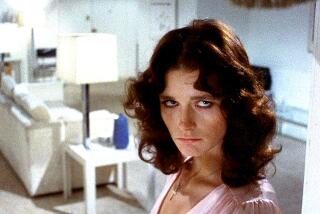Eric Rohmer, an art-house intellectual to the end
Despite being almost universally acknowledged as a master of film, the French director Eric Rohmer, who came to prominence as a member of the so-called New Wave of the late ‘50s and early ‘60s (although he was about 10 years older than many of its most famous members, Jean-Luc Godard and François Truffaut among them) arguably stands as one of the most misunderstood of great directors.
Rohmer, who died Monday in Paris at age 89, came to international prominence with the films he made under the rubric “Six Moral Tales” between 1962 and 1972. Comprising two shorts and four features, these quiet but sometimes devastatingly ironic stories of intelligent upper-middle-class types wrestling with love and morality, particularly the likes of 1969’s “My Night At Maud’s” and 1972’s “Love in the Afternoon,” found avid followings in a then-burgeoning art-house market.
But the pictures, often praised for being driven by intelligent, erudite and cutting dialogue (“In the Company of Men” director Neil LaBute has acknowledged Rohmer’s influence), also had their detractors. One of the most famous was a fictional character: detective Harry Moseby in the 1975 Arthur Penn thriller “Night Moves,” played by Gene Hackman in one of his best roles. Invited to see “Maud,” Moseby demurs, saying, “I saw an Eric Rohmer movie once. It was like watching paint dry.”
Moseby could have watched more carefully. Anybody cognizant of this unfair rap might be surprised to learn that during his tenure as a critic and editor at the famed film magazine Cahiers du Cinema, Rohmer enthusiastically championed such ostensibly “visual” filmmakers as Otto Preminger (master of the long-take traveling shot), the cartoon-influenced Frank Tashlin, and, of course, Alfred Hitchcock.
The influence of such filmmakers is actually felt in all of Rohmer’s pictures but subtly. The will-he-or-won’t-he-commit-infidelity plot of “Love in the Afternoon” (first released in the U.S. as “Chloe in the Afternoon”) is like Billy Wilder’s “The Seven Year Itch” played for potential tragedy rather than broad comedy and has moments of suspense that are clearly Hitchcock-inflected. (The picture also has the distinction of having been remade by Chris Rock, under the title “I Think I Love My Wife.”) Responding in an open letter to a critic who slagged his tales as being overly literary, Rohmer wrote, “What I say, I do not say with words. I do not say it with images either. . . . After all, I do not say, I show.”
In that same piece, Rohmer also wrote, “My characters’ discourse is not necessarily my film’s discourse.” Rohmer’s people were, for the most part, in their 20s and early 30s (he once said that he found the problems of young people more interesting than those of the middle-aged). It almost follows, then, that his characters, while in the main almost hyper-articulate, are also incredibly self-deluding. The British critic Gilbert Adair exaggerates only a bit when, considering for the most part Rohmer’s work in the ‘80s, he avers that “Rohmer’s characters are . . . among the most foolish, ineffectual and pathetic milquetoasts ever to have graced a cinema screen” and that the “celebrated talk” of his films is “sheer, unadulterated twaddle.”
Take, for instance, the character of Marion in Rohmer’s “Pauline at the Beach” (1983), one of his most entertaining pictures. Played by the gorgeous then-ingénue Arielle Dombasle, she is quite the object of desire, but when she insists in the middle of a seemingly endless speech to no one in particular that men have tried to commit suicide over her, the viewer suspects that it’s not so much her beauty as it is her blathering that could motivate just about anyone in earshot, male or female, to open a vein. That Marion, who boasts to the film’s 13-year-old title character of her expertise on all things amorous, soon thereafter falls into the arms of a lunkish gigolo, makes her blithe idiocy as subtly poignant as it is overtly laughable.
The entirety of Rohmer’s work is strewn with such gorgeously felicitous touches. And despite his bedrock consistency, this is a director who never stood still. For his 2001 historical film, “The Lady and the Duke,” a tragedy of love and honor set in the aftermath of the French Revolution, Rohmer shot in digital video and used meticulously designed CGI backdrops to simulate period detail and give his film a painterly look. He was at the time nearly 80 and completely embracing of a new technology.
For his final film, 2007’s “The Romance of Astrea and Celadon,” a gender-bending comedy set in a fairy- and druid-populated fifth century (or so) he adopted a style so completely unadorned that some critics scornfully described it as amateurish. Hardly feeling the need to explain himself, he announced that it was likely his final film, and it turned out to be. Misunderstood to the very end: As it happens, “Astrea and Celadon” is one of his most droll, graceful and wise films.
More to Read
Only good movies
Get the Indie Focus newsletter, Mark Olsen's weekly guide to the world of cinema.
You may occasionally receive promotional content from the Los Angeles Times.










